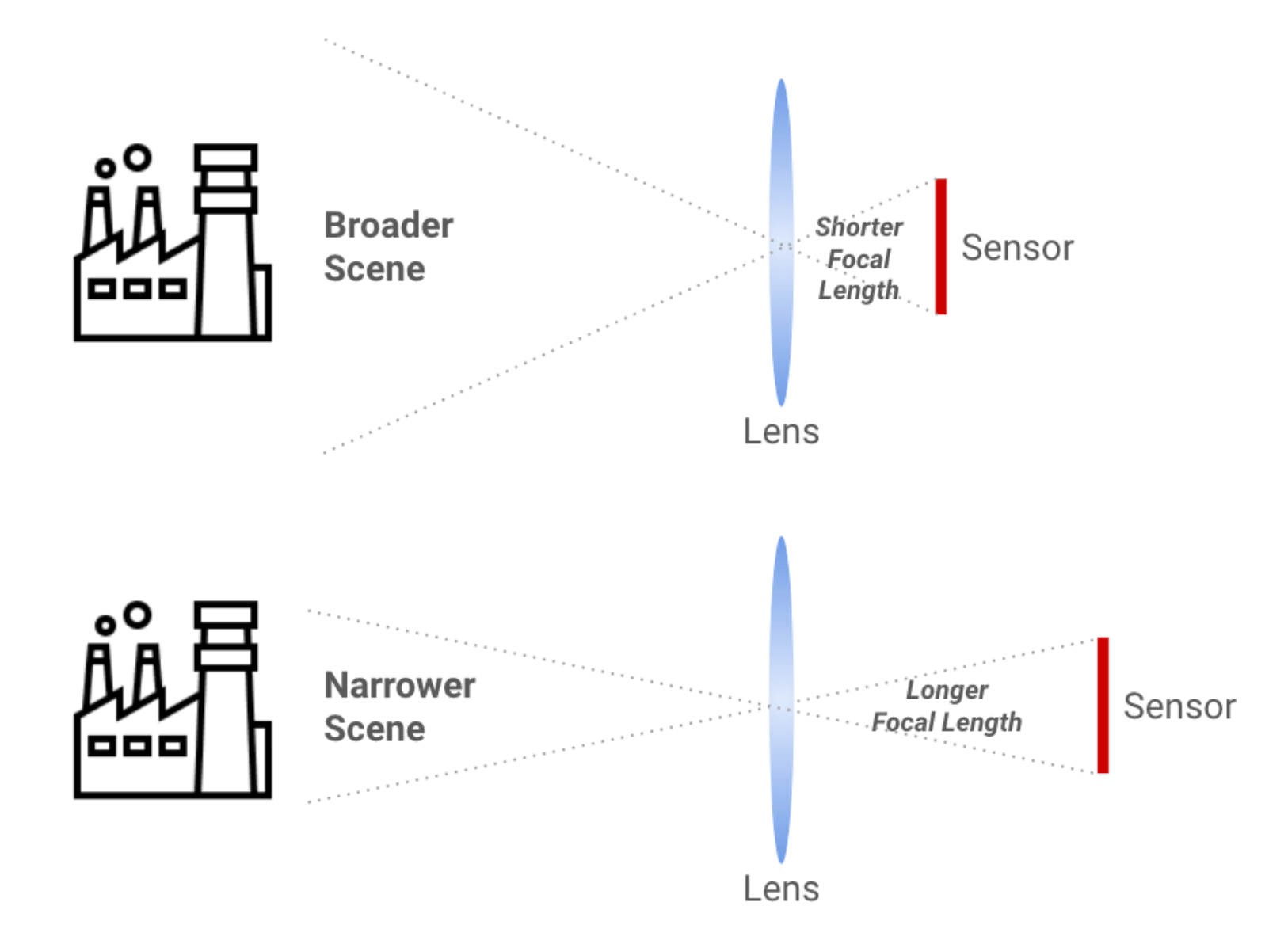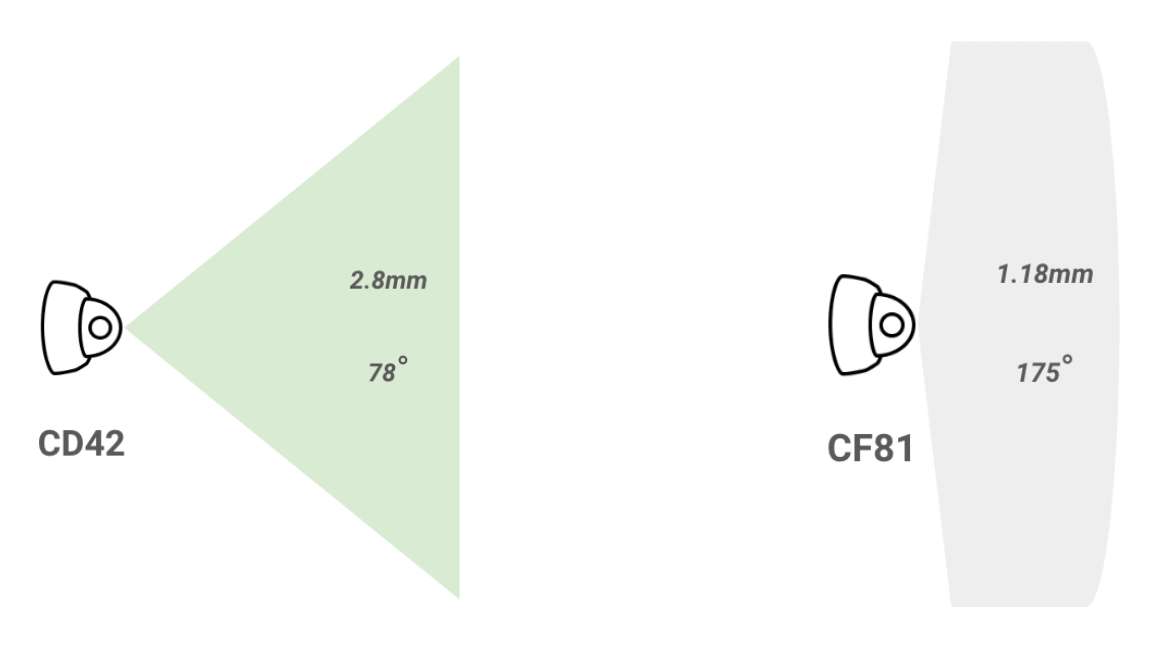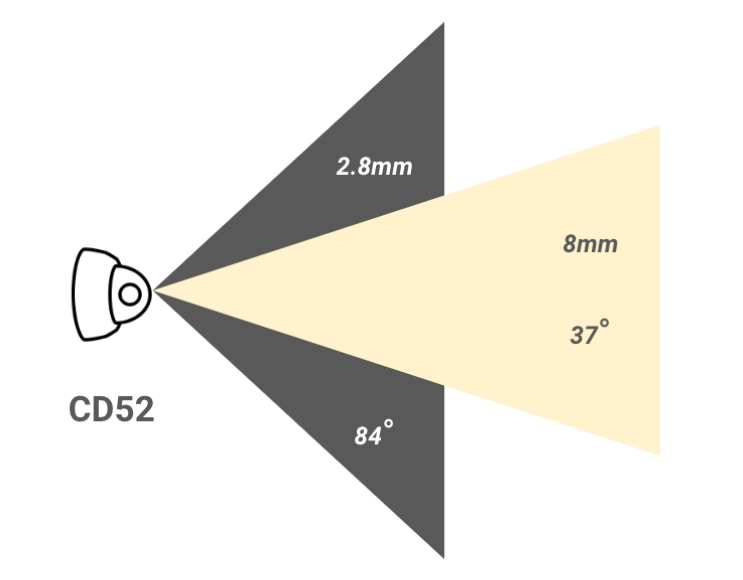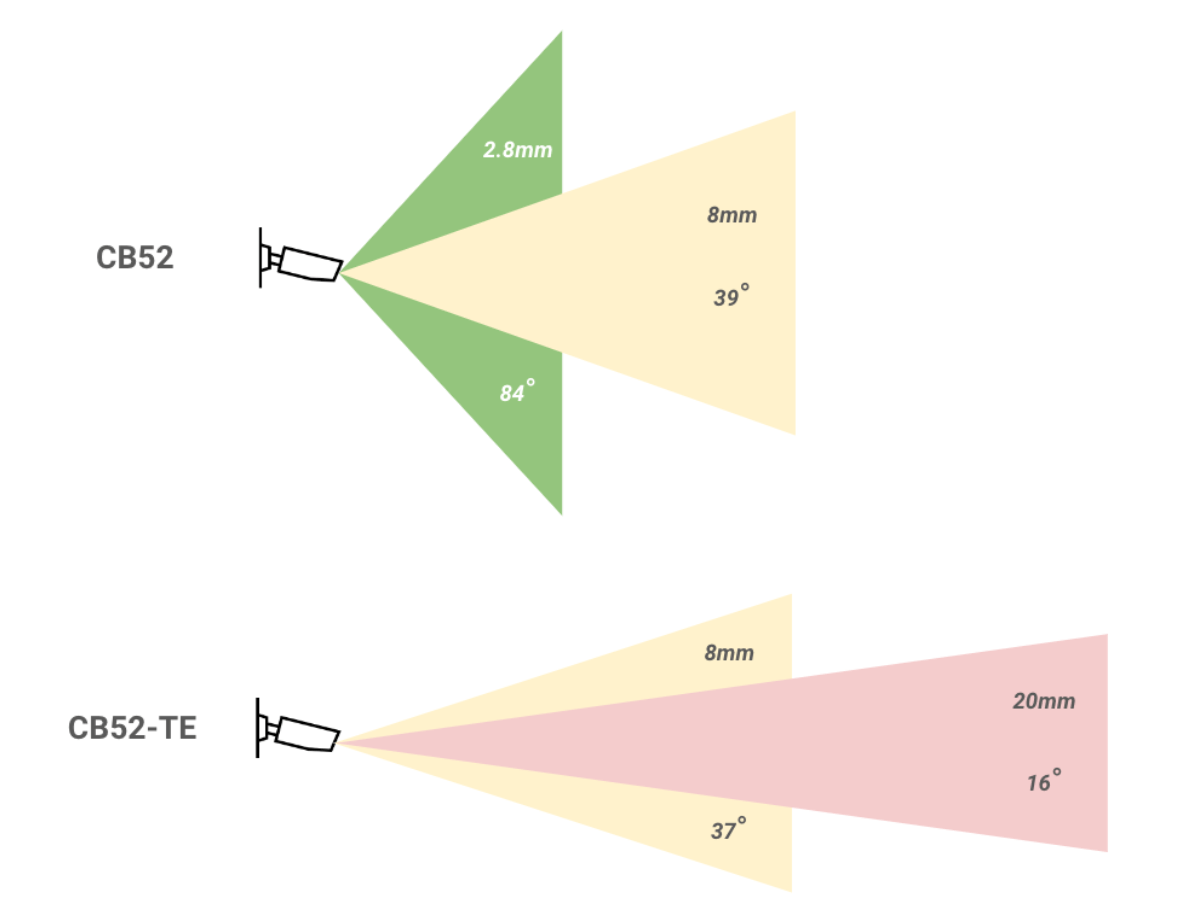Introduction: Camera Basics
Before delving into the specifics of what focal length is, it’s essential to understand the basic components common to all digital cameras, from smartphones to professional sporting event cameras, security cameras, and even telescopes peering into the cosmos. These components include a lens that gathers light, a shutter that controls light exposure, and a sensor that captures the light which ultimately leads to the image or video data.
What is Focal Length?
A key concept in camera optics, focal length is the distance between the lens and the image sensor when the scene is in focus, usually measured in millimeters. It determines the camera’s field of view — how much of the scene will be captured — and the level of magnification. In the realm of security cameras, this translates into how broad or narrow the surveillance area will be. Security cameras typically come with either fixed lenses, having a set, unchanging focal length, or zoom lenses, which offer a range of focal lengths for more flexibility.

Fixed Focal Length
Security cameras with fixed lenses, characterized by their non-adjustable, predetermined focal lengths, are commonly used for general-purpose surveillance due to their typically wider field of view. With no need to adjust zoom or focus, fixed lens cameras feature a less complex design with no moving parts, making for a quicker deployment and less opportunity for malfunction over time. Many manufacturers offer fixed-lens, wide-angle cameras with a focal length around 3mm. For instance, the Verkada CD42, a 5-megapixel dome camera, features a fixed 2.8mm lens, providing a 78-degree horizontal field of view, as illustrated in Figure 1. In contrast, fisheye cameras, known for their extremely short focal lengths, capture an ultra-wide field of view, often 180 degrees, making them ideal for comprehensive area surveillance with a single camera, as depicted in Figure 2.

Variable Focal Length
Variable focal length security cameras, equipped with optical zoom, are highly adaptable tools in video surveillance. These cameras allow the focal length to be adjusted, effectively ‘moving’ the camera closer to the subject. This adjustment narrows and magnifies the field of view while maintaining the high resolution of the image. An example of this is the Verkada CD52, a 5-megapixel dome camera with optical zoom, featuring a variable focal length of 2.8mm to 8mm, as shown in Figure 3.

Additionally, manufacturers often offer cameras with ’telephoto zoom’ for even greater focal length range, such as the Verkada CB52-TE bullet camera (focal length of 8mm - 20mm), depicted in Figure 4 in contrast with the CB52-E standard zoom camera. Such flexibility is particularly useful in various scenarios:
- For Distant Surveillance: Ideal for monitoring large parking lots, entrances to parking lots or properties, and distant buildings or objects when the area of interest is far from the camera’s mounting point.
- For Detailed Observation: Useful in obtaining a closer, more detailed view of specific areas, especially beneficial where analytic features are employed (E.g. license plate recognition). Typical examples include facility entrances, lobbies, elevator vestibules, and security checkpoints.
In each scenario, the ability to vary the focal length allows for tailored video surveillance, ensuring critical areas are monitored effectively and with the necessary level of detail.

Field of View in Degrees
Having established how focal length is directly associated with a camera’s field of view, understanding how camera manufacturers describe this field of view is crucial. Typically, as demonstrated in the above figures, the field of view is expressed in degrees, referring to the horizontal expanse that the camera can capture. Camera manufacturers commonly provide three measurements: horizontal, vertical, and diagonal field of view, each denoted in degrees. This standardization allows for easier comparison and understanding of a camera’s coverage capabilities based on its focal length and any digital enhancements.
Additionally, some cameras feature a Lens Distortion Correction technology. This digital adjustment corrects the natural distortion (curvature) captured by the lens, particularly in wide-angle cameras, and can slightly alter the effective field of view. By straightening the curved edges in the image, this feature enhances the accuracy but slightly reduces coverage at the extremities of the captured area.
Focal Length and Camera Focus
Cameras equipped with optical zoom inherently require a focusing mechanism to ensure image clarity. This is because each adjustment in the camera’s zoom necessitates a corresponding refocusing of the lens elements to maintain a sharp, clear image. Modern security cameras typically come with an automatic focus feature to handle this adjustment seamlessly. However, there are instances where the camera’s autofocus might not align with the user’s priorities in a scene. In such cases, it may focus on an area that the user deems less important, leaving the critical areas out-of-focus. These situations call for user intervention, either through manual refocusing of the camera or by directing the camera to prioritize a specific area of the field of view for focus. This flexibility allows for precise control over the surveillance image, ensuring that important details are not missed.
Focal Length & Resolution
When selecting a security camera for a specific surveillance use case, it’s essential to consider both focal length and sensor resolution, even though they aren’t directly related. The camera’s sensor records at a consistent resolution, irrespective of the optical zoom level or focal length configuration. For instance, a wide-angle camera positioned to capture a large area, such as a parking lot, provides overall visibility, but spreads its resolution over a broad scene. This means that detail in any specific location within the scene is limited.
In scenarios where a particular area requires more detailed observation than the broad view, a camera with optical zoom becomes advantageous. By zooming in on that area, you’re effectively concentrating the camera’s fixed resolution on a smaller space, resulting in a much more detailed image.
This approach is especially beneficial for analytic features like facial recognition and license plate recognition, which require higher levels of detail to function effectively. While fixed lens cameras can achieve this by being installed closer to the target area, this is not always feasible or desirable. Cameras with optical zoom offer a solution, enabling installation at a more convenient or aesthetically pleasing location, further from the scene. They can then zoom in to provide the necessary level of detail for these analytic functions to operate successfully.
Conclusion
Focal length is a key factor in security camera selection, impacting field of view and detail capture. Choosing between fixed and variable focal length cameras depends on specific surveillance requirements. Balancing focal length with camera focus and resolution is vital for optimal surveillance, particularly when using advanced analytics. The right choice in focal length ensures an effective security system, capturing clear images exactly where needed.